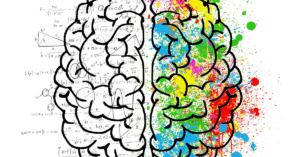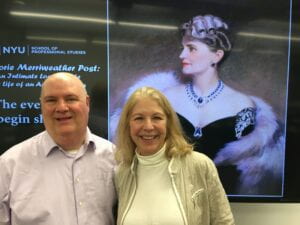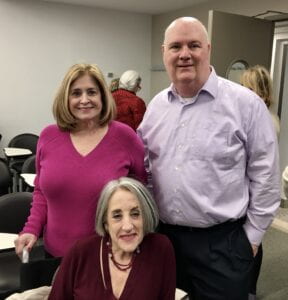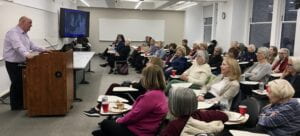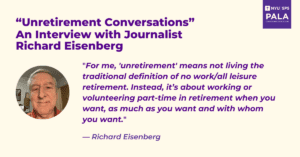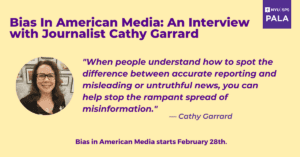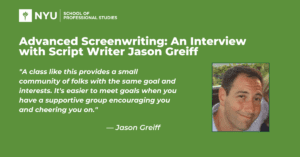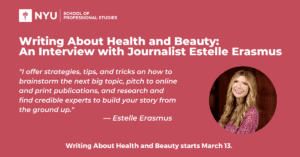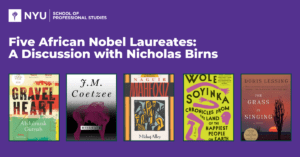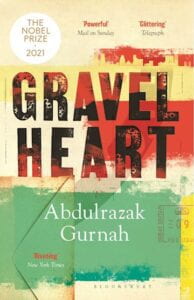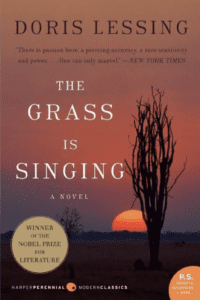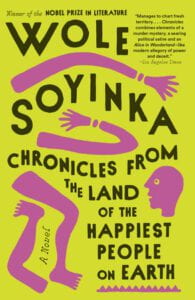At NYU SPS PALA/CE, we are on the lookout for new studies and commentary that can help us better understand the society we live in and our place in it. For NYU News, Jade McClain, interviewed Gallatin Professor Bradley Lewis and University of the Arts Helsinki Professor Jussi Valtonen, who released a paper on how the humanties could support mental illness treatment.
Read on below for a re-post of the article: “Brain imaging failed to crack the code on mental illness. Can the humanities help?”
The following is a re-post from NYU News, written by Jade McClain.
When a person breaks a bone, an x-ray allows a doctor to identify and treat the problem. But for those suffering with psychiatric disorders such as depression or schizophrenia, an internal look at the brain fails to provide such a remedy. The lack of success is not for lack of trying, as scientists have spent decades studying the brain for clues about mental illness.
Neuroscientist Thomas Insel, dubbed “the nation’s psychiatrist,” recently discussed the shortcomings science has yielded with regard to patient outcomes. During his time as the director of the National Institute of Mental Health, he focused the agency’s work particularly on neuroscience. This prompted scientists to search for answers to questions about mental health by studying the complexity of the brain, but didn’t encourage them to address the behavioral, cultural, social, political, religious, existential, and psychological factors that can offer insight into what mental health means and how it’s related to the human condition.
This problem is explained by Gallatin Professor Bradley Lewis and University of the Arts Helsinki Professor Jussi Valtonen in their recent Journal of Medical Humanities article, “The Brain Disorders Debate, Chekhov, and Mental Health Humanities.”
“The situation does stand in stark contrast…with the early research optimism that neuroimaging inspired when the methods first became available,” they write. “Instead, we are left with no reliably identified brain activation patterns for any mental health conditions.”
Their article acknowledges that neuroscience is helpful, but argues that it is not enough: the arts and humanities must work alongside scientific pursuits in order to advance our understanding of mental health.
NYU News joined Lewis and Valtonen to discuss the state of mental health in the US and how disciplines focused on the human experience and pursuit of meaning can play a key role in understanding and treating mental illness.
How would you describe the current state of mental health in the US?
Lewis: It’s no secret that our country is in a mental health crisis. A recent CNN survey found that 90 percent of respondents thought we were in a crisis, and President Biden has made this a key priority of his administration. The White House fact sheet on the mental health crisis reports that “two in five American adults are suffering symptoms of anxiety and depression,” more than “half of parents express concern over their children’s mental well-being,” and “over 40 percent of teenagers are dealing with persistent feelings of sadness or hopelessness.”
COVID and post-COVID hardships have no doubt played a major role in these escalating statistics. But all the blame cannot be put on the pandemic. Even before 2020, our country was seeing large numbers of the population going through deep and difficult experiences of sadness, despair, anxiety, panic, trauma, isolation, addiction, alienation, and suicidal ideation.
This ongoing mental health crisis is exposing problems with our overwhelmed mental health care systems and has a knock-on detrimental effect on community issues such as homelessness, education, labor, physical health, family life, community trust, and criminal justice.
How have the natural sciences fallen short in addressing mental illness?
Valtonen: The promissory note of psychiatric brain research is not coming true. For decades, psychiatric researchers were working incredibly hard to find causes of depression and other mental health problems in neurotransmitters, such as serotonin. Despite extensive investment and numbers of studies, no convincing evidence ever emerged that depression would be caused by a lack of serotonin—as summarized most recently in an umbrella review published last year in Molecular Psychiatry.
A very similar thing has happened with functional neuroimaging. Very high hopes and massive research efforts have been placed in brain imaging, in the hope that we would find revelatory explanations for mental health problems from brain activation patterns. However, no consistent results have emerged even after three decades of study. Contrary to what was hoped, it has proven very difficult to find any replicable findings from these studies.
Brain imaging does not tell us how to make sense of our singular experiences, what it feels like to be a human being alive today, what we’re lacking when life doesn’t feel meaningful, why we’re struggling, or what we need when we’re in despair. Modern brain research tools are useful and exciting methods for studying brain function, but they’re not a shortcut to understanding the human condition. It’s not so much that neuroscience has fallen short of addressing mental health issues, but more that we, as Western cultures, have insisted on looking to neuroscience for answers to questions that are fundamentally outside its purview.
How can mental health practitioners use the arts and humanities to help people with mental illness?
Lewis: In spite of the lack of evidence that brain research is the golden ticket for mental health issues, our current treatment systems are biased toward biological and neurological models and thus toward psychiatric medications. High numbers of people seeking help for their suffering are being over-diagnosed and over-medicated. This has been a growing problem since the 1980s but has dramatically worsened in the current mental health crisis. Recent estimates suggest that 1 in 4 people are taking mental health medications.
This push toward medication has meant we have underdeveloped and neglected other approaches. Mental health education, research, and practice has rarely looked across the college campus to draw insights from the arts, from humanities, and from cultural, political, and religious studies.
But there is much value in these other domains, which is why we are advocating for mental health humanities to augment mental health sciences. The arts and humanities help us—both mental health practitioners and clients—understand human experience and human needs in a way that other approaches cannot. They help us make new meanings and refresh older meanings. They contribute to our happiness, our well-being, our democracy, and can shed light on social conflicts. Beyond psychology’s categories or neuroscience’s findings, these arts and humanities domains add a value dimension to our world that is good for its own sake. By leaving them out, we are left with an understanding of mental health that is rudimentary and a response to mental issues that is woefully inadequate.
Is there a role for people with mental illness to personally engage with the arts and humanities for their benefit?
Lewis: When we have troubles in our lives, either because we suffer or because we are different from normative expectations, we need ways to understand this suffering and this difference. A diagnosis of mental illness, often using biological metaphors and models, is one of the ways we can try to understand this suffering. But this interpretation only scratches the surface. The arts and humanities help us open to additional meaning-making possibilities, in which prejudice and stigma go down and new opportunities and options arise. Reading, dance, photography, gallery and museum visiting, puppetry, music listening, storytelling, philosophy, theater, cooking, film, quilting, and so on, allow for new connections to be made, and new ways of living that lead to less suffering and alienation.
The arts and humanities can help on a community level too. Personal mental experience is deeply connected to social, cultural, and political life. The meaning-making that over-individualizes mental issues is a key aspect of over-diagnosis and over-medication. When we move out of this individualizing frame, we understand that mental difficulties are deeply linked with community and institutional dysfunction, with social inequality and injustice, and with frayed and neglected community resources. The arts and humanities can help us imagine, nurture, and create healthy institutions and communities that foster mental well-being. They often do so, in part, by asking questions, rather than insisting on conventional understandings and established power dynamics. At a broader level of public health, there are also growing initiatives that focus on the possibilities of increasing wellbeing through community arts and humanities initiatives.
Valtonen: In this paper, we are focusing on the ways the arts and humanities can provide more multifaceted ways of thinking about what our experiences mean. For example, we discuss how engaging with literature such as Anton Chekhov’s short story, “A Nervous Breakdown,” helps us pay closer attention to the multiple ways in which a person’s suffering can be understood. As Chekhov shows us, there is quite a range of psychological, social, and biological factors as well as political and other forces affecting the main character’s reactions to a complicated situation. Paying closer attention to the multiple meanings in singular painful experiences through art can help us be more receptive to them in life.
What do you see as next steps?
Lewis: When we put this together, it seems clear that now is the time to develop mental health arts and humanities to join with mental health sciences in order to research, teach, and practice mental health care. Our mental health issues are too big and too complex to mobilize only half of the university. It’s an all hands on deck situation!
Read the original article on NYU News.
Visit the Academy of Lifelong Learning website to explore all upcoming course offerings in the humanities and global affairs as well as participate in events and clubs.
These humanties courses may be of particular interest:
The Metropolitan Museum of Art: Then and Now
Art from the Age of Cathedrals: Medieval Art and Architecture
Touched by Fire: Van Gogh’s Passion
Micro Memoir: Writing Your Life In 200 Words Or Less
Cultural History of NYC from the Jazz Age to Post-War Modernism
